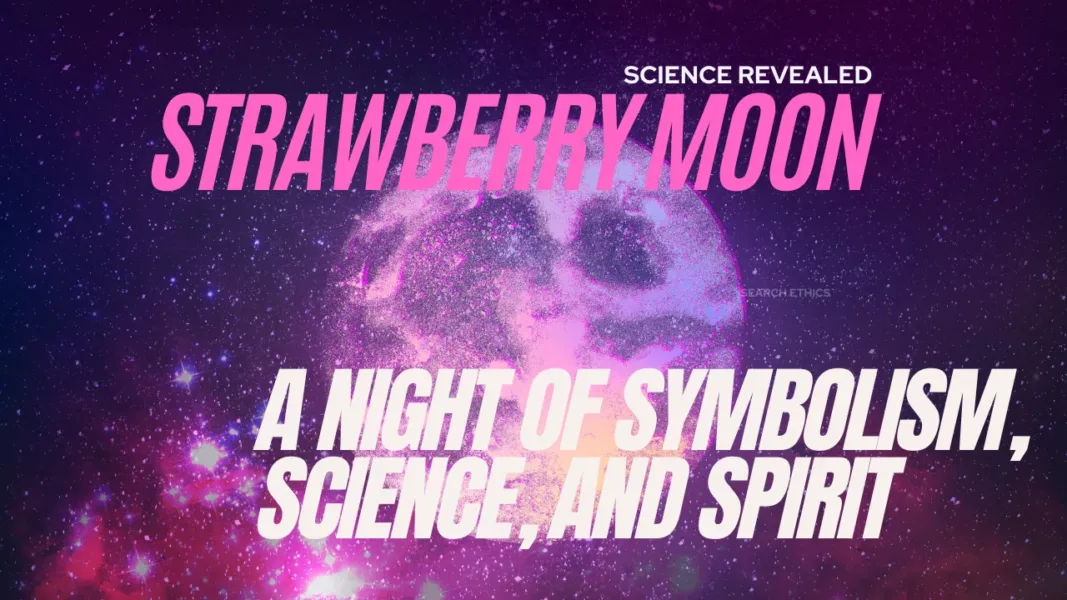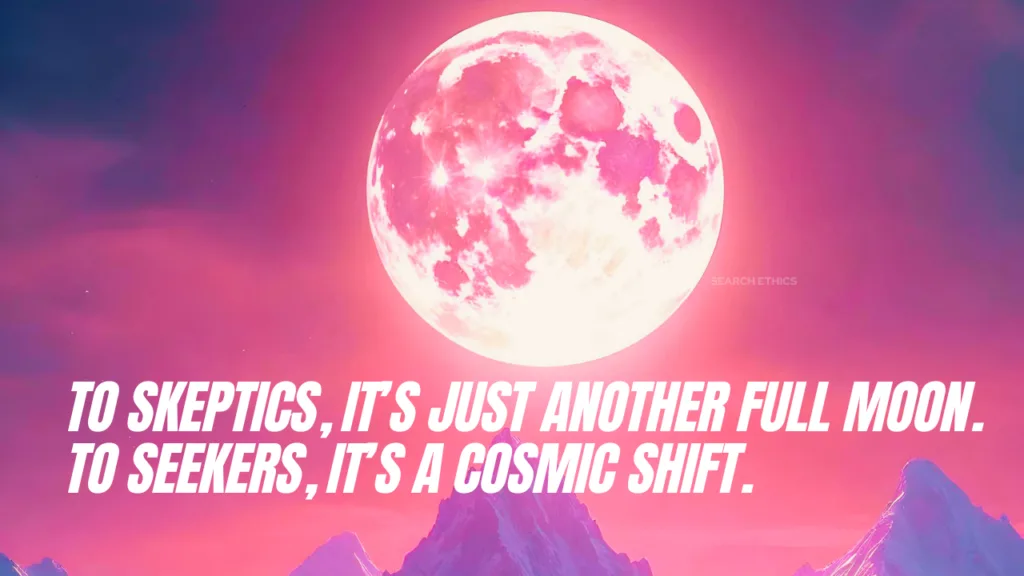Now Reading: Strawberry Moon Explained: Meaning, Myths & Magic
-
01
Strawberry Moon Explained: Meaning, Myths & Magic
Strawberry Moon Explained: Meaning, Myths & Magic

On the night of Wednesday, June 11th, 2025, a powerful full moon will rise—an event rich in ancient symbolism and spiritual significance. Known as the Strawberry Moon, it won’t resemble a strawberry in appearance, but its meaning runs deep across cultures and centuries.
Often described as a moon of prophecy, love, transition—and in some traditions, warning—this particular full moon has long been considered more than just a celestial event. So what makes it so different from the rest? Why did civilizations across the world see this moon as a portal between worlds? And why is the Strawberry Moon forecasted to be the lowest and most visually intense in nearly two decades?
Let’s explore the powerful story behind this mystical moon.
Why “Strawberry Moon”?
The name “Strawberry Moon” originates from the Algonquin tribes of North America, who noted that June’s full moon aligned with the ripening of wild strawberries. But it wasn’t just about fruit. This moon signaled a sacred seasonal shift—from planting to harvesting, from youth to maturity. It represented fertility, sweetness, and transformation.
Other Indigenous groups had their own names:
-
The Cherokee called it the Green Corn Moon.
-
The Tlingit referred to it as the Birth Moon.
-
In Europe, it became known as the Rose Moon or Honeymoon—which is where the modern wedding term comes from. Weddings during this moon were believed to carry blessings of sweetness and longevity.
But beyond agricultural timing and romantic legend, many believed this moon signaled a shift in fate—a moment of decision whose echoes would shape the rest of the year.
What Makes the 2025 Strawberry Moon Unique?
The 2025 Strawberry Moon peaks on June 11th, and astronomically, it stands out for one fascinating reason: its position.
This year, the moon will hang lower in the sky than it has in 18 years. As it hugs the horizon, it will appear larger and more golden than usual—not pink, but a warm, coppery glow, like ripened fruit or the embers of an old fire.
To ancient cultures, such a low moon was considered “grounded”—closer to Earth, and thus more potent. A grounded moon was seen as more powerful, more dangerous, and more divine.
You may also love to hear about smiley face moon
Ancient Beliefs Across Cultures
This moon’s spiritual weight spans continents:
-
In Hinduism, June’s full moon aligns with sacred rituals of devotion and renewal.
-
In Ancient Egypt, it was associated with Thoth, the god of wisdom and time.
-
Celtic Druids marked it as part of the oak moon cycle, a time for prophecy and protection.
-
In Asia, it signified the beginning of monsoon season or fertility rains.
-
Indigenous tribes across the Americas used this moon for vision quests, healing rituals, and ceremonial dances.
Even without modern calendars or technology, cultures separated by oceans saw this moon as special.
The Spiritual Lens Today
In modern spiritual circles, the Strawberry Moon is considered a time for release, attraction, and reflection.
Many use it to let go of past pain, set intentions, or manifest love. Others simply treat it as a cosmic checkpoint—a moment to pause and ask:
“What am I harvesting in my life?”
Some mystics believe this moon carries sweetening energy—capable of softening conflicts, healing old wounds, and bringing clarity. Others say it amplifies what already exists within: calming the calm, and challenging the anxious.

Is There Any Science Behind It?
Surprisingly, there is.
Studies show that full moons can influence human sleep, animal behavior, mood disorders, and even ocean tides. Since the human body is mostly water, some researchers theorize that the moon could subtly affect us, too.
NASA acknowledges the unusual intensity of this full moon and the deep cultural significance it holds—while stopping short of endorsing its spiritual meanings.
A Theory of Ancestral Memory
What if the Strawberry Moon’s power isn’t just cultural, but biological?
Biologist and philosopher Rupert Sheldrake proposed a concept called morphic resonance—suggesting that memory and learned behaviors are stored not just in DNA, but in invisible energy fields.
What if this moon acts as a trigger—awakening ancient instincts, or opening intuitive channels passed through generations?
That chill you feel under a full moon may not be random. It might be ancestral memory.
Final Reflection: What Will You Do With This Moment?
On the night of Wednesday, June 11th, the Strawberry Moon will rise again, as it has for thousands of years.
You could scroll past it. Sleep through it. Dismiss it.
Or you could step outside, look up, and ask yourself:
-
What am I harvesting in my life?
-
What have I outgrown?
-
What am I ready to sweeten—or release?
This moon is not just a symbol. It’s a moment.
And like all moments, it will pass.
But what you make of it? That’s entirely up to you.
Frequently Asked Questions
Why is it called the Strawberry Moon?
The name comes from the Algonquin tribes who associated the June full moon with the ripening of wild strawberries.
Will the moon actually look like a strawberry?
No. Despite the name, it will appear golden or copper-colored, especially in 2025 due to its low position near the horizon.
Is there any scientific impact of full moons?
Yes, studies have shown links to sleep changes, tides, mood swings, and animal behavior.
Can I perform rituals under this moon?
Absolutely. Many use this time for release, intention setting, relationship healing, or simply quiet reflection.
What makes the 2025 Strawberry Moon special?
It will be the lowest full moon in 18 years, making it appear unusually large and vibrant.
Thanks for reading!
For more science news, get deeper into Search Ethics for deeper insights into the cosmos and beyond.
Dony Garvasis is the founder of Search Ethics, a platform dedicated to transparency, authenticity, and ethical digital practices. With over six years of experience in SEO and digital marketing, I provide expert content on automobiles, technology, gadgets, and online strategies. My mission is simple: Ethical Search, Genuine Results—ensuring users worldwide receive credible, useful, and up-to-date content.










